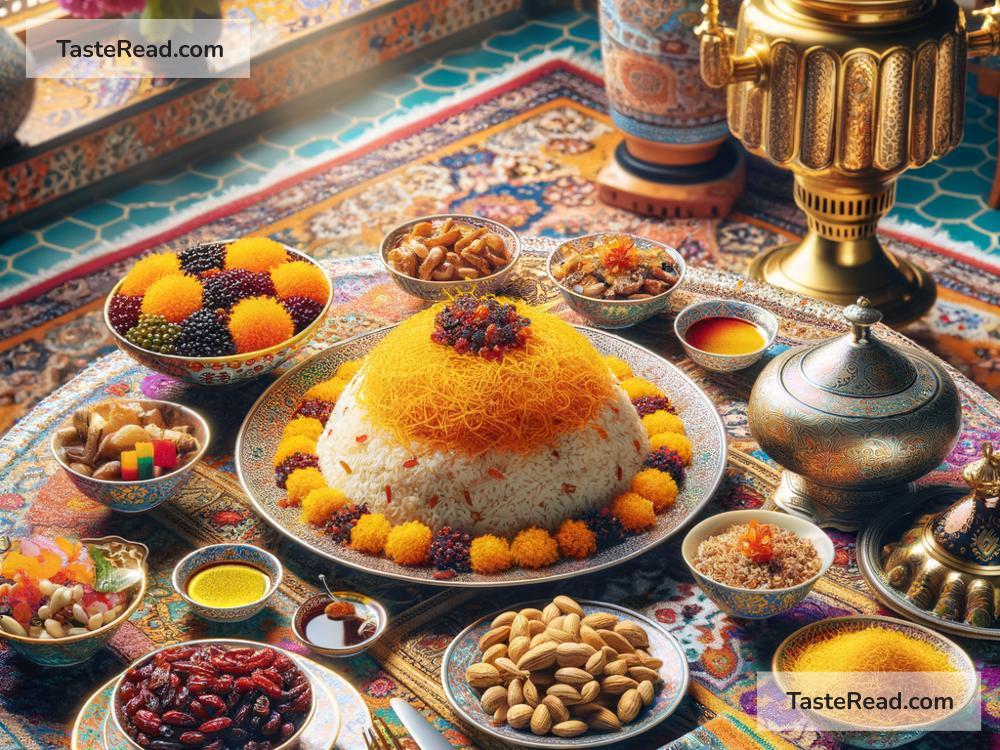Exploring the Flavor Richness of Persian Rice Pilaf in Tehran, Iran
If you ever visit Tehran, the bustling capital of Iran, one thing you simply cannot miss is its food. Persian cuisine is famous for its rich flavors, colorful dishes, and unique cooking techniques. Among the many delicious dishes that Iran has to offer, Persian rice pilaf, known as “polow” (in Persian), holds a special place. It’s not just a meal—it’s an art form cherished by generations.
The Heart of Persian Cuisine: Rice Pilaf
Rice has been a staple in Iranian cuisine for centuries. Families pass down recipes from one generation to the next, creating dishes that are both comforting and unforgettable. Persian rice pilaf isn’t your everyday boiled rice. Instead, it is a complex, flavorful creation where every grain shines with perfection.
The secret to Persian rice lies in the cooking technique. The rice is first partially boiled and then steamed, allowing it to become fluffy and light, with each grain distinct. Often, Iranian rice dishes also feature a crispy golden crust at the bottom, known as “tahdig.” Tahdig is the crowning glory of Persian rice pilaf, adding crunch and texture to the dish.
Pilaf recipes vary across Iranian regions, featuring diverse ingredients, spices, and flavors. However, Tehran, as Iran’s vibrant culinary hub, serves some of the finest pilaf dishes, blending traditional recipes with influences from across the country.
Fragrant Spices and Complex Flavors
Persian rice pilaf is not just about rice; it’s about layers of flavors. Saffron is a key ingredient that gives Persian rice its golden hue and distinctive aroma. Known as “the king of spices,” saffron is derived from the delicate threads of the crocus flower and is prized for its rich taste.
Other ingredients commonly used in Persian pilafs include barberries (small, tart berries that add a zesty tang), nuts (such as pistachios or almonds), and dried fruits (like apricots or raisins). Herbs such as dill, parsley, and mint are often added to give the dish a fresh, earthy flavor. Some recipes also include tender chunks of lamb, chicken, or fish, making the pilaf a complete, satisfying meal.
The combination of sweet and savory flavors is one of the hallmarks of Persian cuisine. Many pilaf dishes incorporate hints of cinnamon, cardamom, or rosewater, blending spices in ways that awaken the senses and leave a lasting impression.
Tahdig: The Star of the Table
No discussion about Persian rice pilaf is complete without mentioning tahdig. This crispy, golden layer at the bottom of the pot is highly prized—and often fought over—at the dinner table! Tahdig can be made from plain rice, thin slices of potato, flatbread, or even yogurt mixed with rice. Once the rice is steamed, the pot is flipped upside down, revealing the stunning tahdig.
Creating the perfect tahdig requires skill and patience. It should be evenly crispy but never burnt. Many chefs and home cooks regard tahdig as a test of their cooking prowess, and guests always compliment a well-made tahdig before anything else.
The Experience in Tehran: Food and Culture
Tehran is the perfect place to experience Persian rice pilaf at its finest. Its restaurants range from modest family-run establishments to elegant fine-dining venues, all serving variations of polow cooked with love and care.
One of the city’s most famous rice dishes is “zereshk polow,” made with barberries, saffron, and chicken. The tartness of the barberries combines beautifully with the aromatic saffron and tender chicken, creating a dish you’ll remember long after your meal ends. Another favorite is “baghali polow,” a fragrant pilaf made with dill, fava beans, and lamb shank—a true celebration of spring flavors.
For the full cultural experience, try dining with locals. Iranian hospitality is legendary, and many Tehranis are eager to share their culture and cuisine with visitors. If you’re lucky enough to be invited into someone’s home, you might get to enjoy the warmth of a Persian meal served family-style, with multiple dishes spread across the table. Rice pilaf is often the centerpiece, with stews, kebabs, and salads acting as accompaniments.
Tips for Enjoying Persian Rice Pilaf
When eating Persian rice pilaf, take your time to savor every bite. Notice the aroma before diving in, and let your taste buds explore the sweet and savory balance of flavors. Pair it with some tangy yogurt or crunchy pickles for added zest.
If you’re enthusiastic about cooking, consider taking a Persian cooking class in Tehran. You’ll learn how to make the perfect pilaf, master the art of tahdig, and discover the beauty of Persian spices. Cooking Persian rice is a skill worth having—not just for the food itself, but as a connection to the rich culture behind it.
Conclusion
Persian rice pilaf is more than just a dish; it’s a celebration of Iran’s culture, history, and culinary artistry. From its fluffy grains to its vibrant saffron hues and crispy tahdig, it’s a meal that captivates your senses and warms your heart.
In Tehran, you’ll find rice pilaf prepared in countless ways, reflecting the city’s diverse food scene and its deep-rooted traditions. Whether you enjoy it at a high-end restaurant or in a cozy family kitchen, Persian rice pilaf is sure to leave you with memories of delightful flavors and the warmth of Iranian hospitality. So, when you visit Tehran, make room for this iconic dish on your plate—you won’t regret it!


